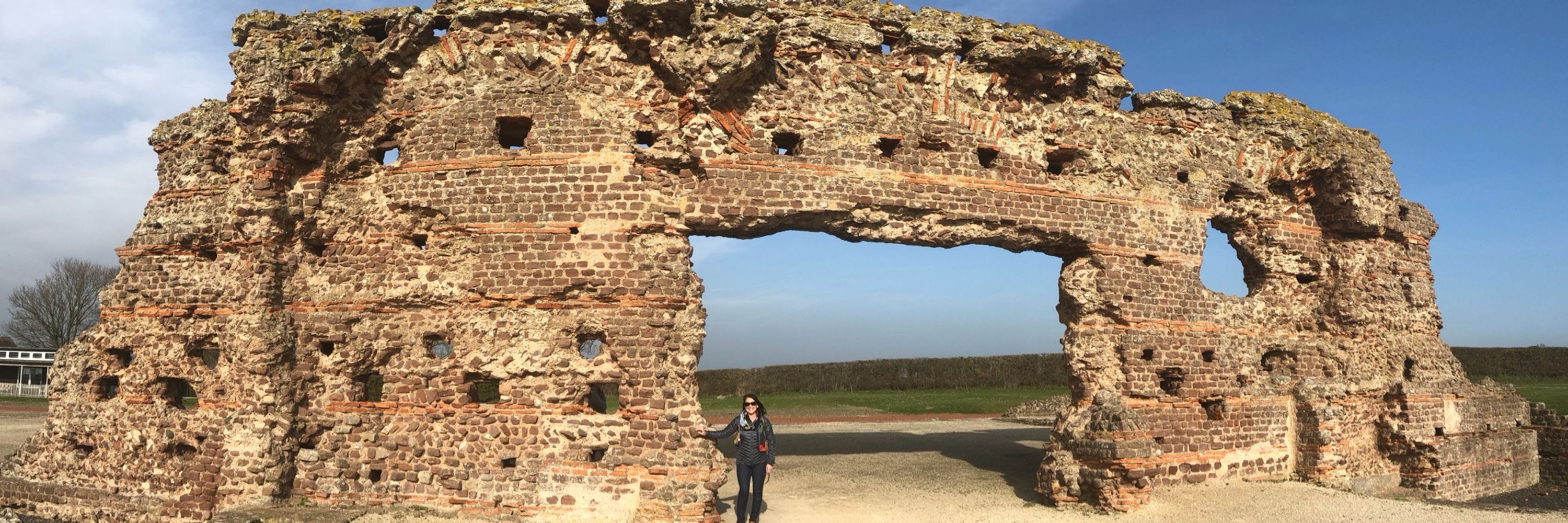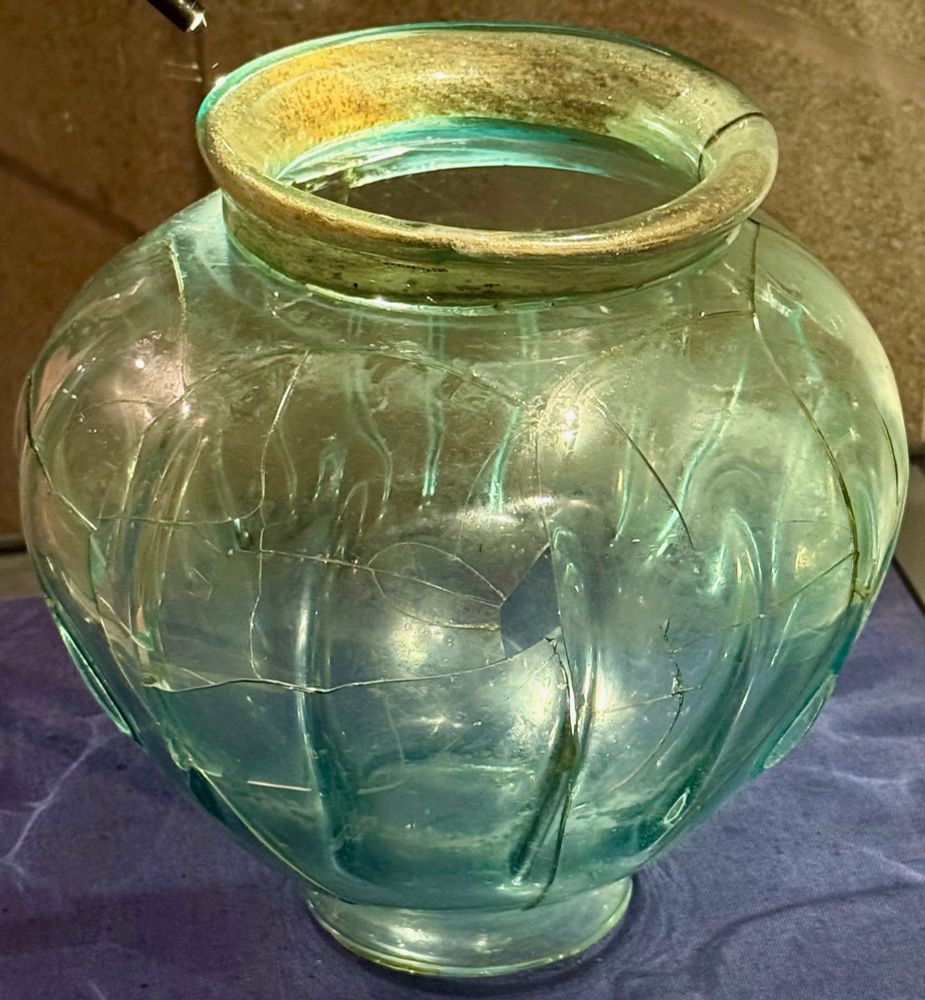
Here to share my love of archaeology.
About 2,000 years-ago, a dog made its mark for ‘pawsterity’ when it wandered across the wet tile laid out to dry before firing.
From Richborough Roman fort
📷 by me
#TilesonTuesday
#Archaeology

About 2,000 years-ago, a dog made its mark for ‘pawsterity’ when it wandered across the wet tile laid out to dry before firing.
From Richborough Roman fort
📷 by me
#TilesonTuesday
#Archaeology
Honestly, it's relentless...
#Archaeology 🏺 #Detecting #Treasure #Coins
There, fixed that headline for you
www.dorsetecho.co.uk/news/2562811...

Honestly, it's relentless...
#Archaeology 🏺 #Detecting #Treasure #Coins
Size: H. 11.6 × W. 9.7 × D. 5 cm
🏛️ Met
🏺 #archaeology 🗃️ #arthistory #art

Size: H. 11.6 × W. 9.7 × D. 5 cm
🏛️ Met
🏺 #archaeology 🗃️ #arthistory #art
c. 1630-50
Probably from Lahore
Seen at -
The Great Mughals:
Art, Architecture and Opulence exhibition.
V & A Museum #London
#TilesOnTuesday

c. 1630-50
Probably from Lahore
Seen at -
The Great Mughals:
Art, Architecture and Opulence exhibition.
V & A Museum #London
#TilesOnTuesday
Uncovered in the room above the chapel of St Andrew and St Catherine during work on the roof.
#TilesOnTuesday #medieval

Uncovered in the room above the chapel of St Andrew and St Catherine during work on the roof.
#TilesOnTuesday #medieval
About 2,000 years-ago, a dog made its mark for ‘pawsterity’ when it wandered across the wet tile laid out to dry before firing.
From Richborough Roman fort
📷 by me
#TilesonTuesday
#Archaeology

About 2,000 years-ago, a dog made its mark for ‘pawsterity’ when it wandered across the wet tile laid out to dry before firing.
From Richborough Roman fort
📷 by me
#TilesonTuesday
#Archaeology
I'll be there along with the super knowledgeable @archaedelle.bsky.social 🥳
@findsorguk.bsky.social
Looking forward to seeing what's been discovered in the region! 🧐

I'll be there along with the super knowledgeable @archaedelle.bsky.social 🥳
@findsorguk.bsky.social
Looking forward to seeing what's been discovered in the region! 🧐
Have some.
1/




Have some.
1/

works.hcommons.org/records/4ae7...

works.hcommons.org/records/4ae7...
#EpigraphyTuesday #Archaeology #RomanEmpire
www.labrujulaverde.com/en/2025/11/a...

#EpigraphyTuesday #Archaeology #RomanEmpire
www.labrujulaverde.com/en/2025/11/a...
The different classes of gladiators can be distinguished by their armor and weapons. A Thraex was equipped with a small shield and a short, curved blade. The helmet, with...🧵1/3
📷 me
🏺 #archaeology

The different classes of gladiators can be distinguished by their armor and weapons. A Thraex was equipped with a small shield and a short, curved blade. The helmet, with...🧵1/3
📷 me
🏺 #archaeology
dergipark.org.tr/tr/pub/jmr/i...

dergipark.org.tr/tr/pub/jmr/i...

An amazing c. 3,400 year-old ancient Egyptian dog carved from ivory. This leaping dog opens and closes its mouth as if barking by using a lever below its chest.
The Met 📷 by me
#Archaeology

An amazing c. 3,400 year-old ancient Egyptian dog carved from ivory. This leaping dog opens and closes its mouth as if barking by using a lever below its chest.
The Met 📷 by me
#Archaeology

An arrowhead made of #meteorite iron: around 1,500 BC, a meteorite struck #Estonia. A fragment of it arrived - presumably in the baggage of an amber trader - at what is now Lake Biel, #Switzerland. An arrowhead was then made there from the cosmic iron.
From Mörigen, 900-800 BC.
📷 me

An arrowhead made of #meteorite iron: around 1,500 BC, a meteorite struck #Estonia. A fragment of it arrived - presumably in the baggage of an amber trader - at what is now Lake Biel, #Switzerland. An arrowhead was then made there from the cosmic iron.
From Mörigen, 900-800 BC.
📷 me
There, fixed that headline for you
www.dorsetecho.co.uk/news/2562811...

There, fixed that headline for you
www.dorsetecho.co.uk/news/2562811...
From Pozzuoli, mid-1st c. CE. #BritishMuseum
📸 me

From Pozzuoli, mid-1st c. CE. #BritishMuseum
📸 me
phys.org/news/2025-11...

phys.org/news/2025-11...




Are there thousands of us snapping pics of animals in art and museums? Must be a big appreciation club 🤩 here is my less than refined, but cute anyway, little pup I found in V&A, London (I think 🤔)

Are there thousands of us snapping pics of animals in art and museums? Must be a big appreciation club 🤩 here is my less than refined, but cute anyway, little pup I found in V&A, London (I think 🤔)
An amazing c. 3,400 year-old ancient Egyptian dog carved from ivory. This leaping dog opens and closes its mouth as if barking by using a lever below its chest.
The Met 📷 by me
#Archaeology

An amazing c. 3,400 year-old ancient Egyptian dog carved from ivory. This leaping dog opens and closes its mouth as if barking by using a lever below its chest.
The Met 📷 by me
#Archaeology


